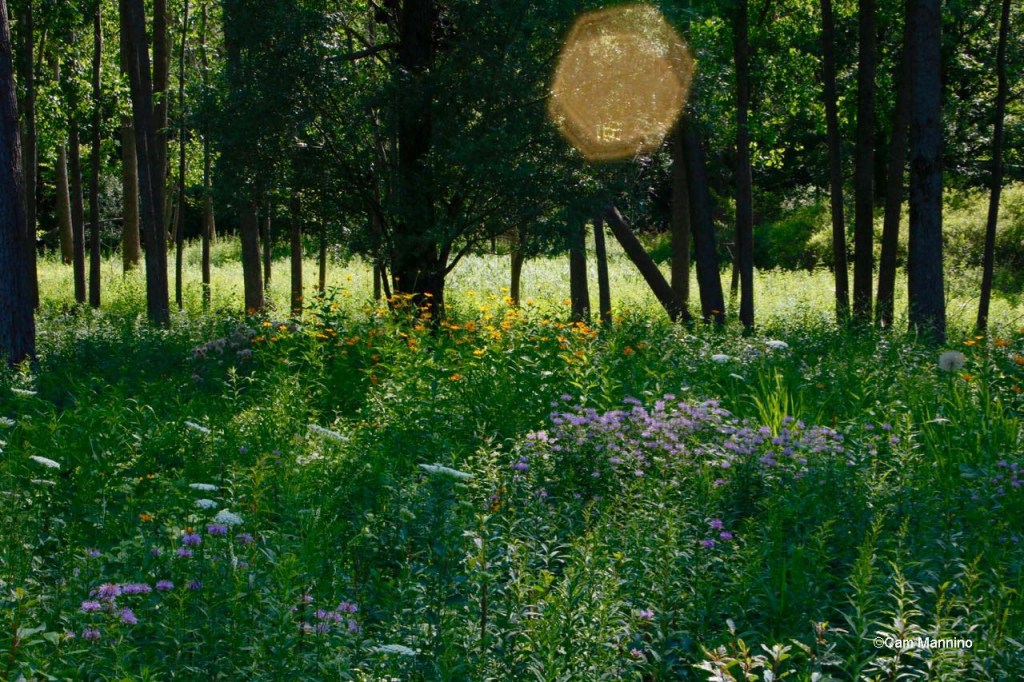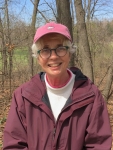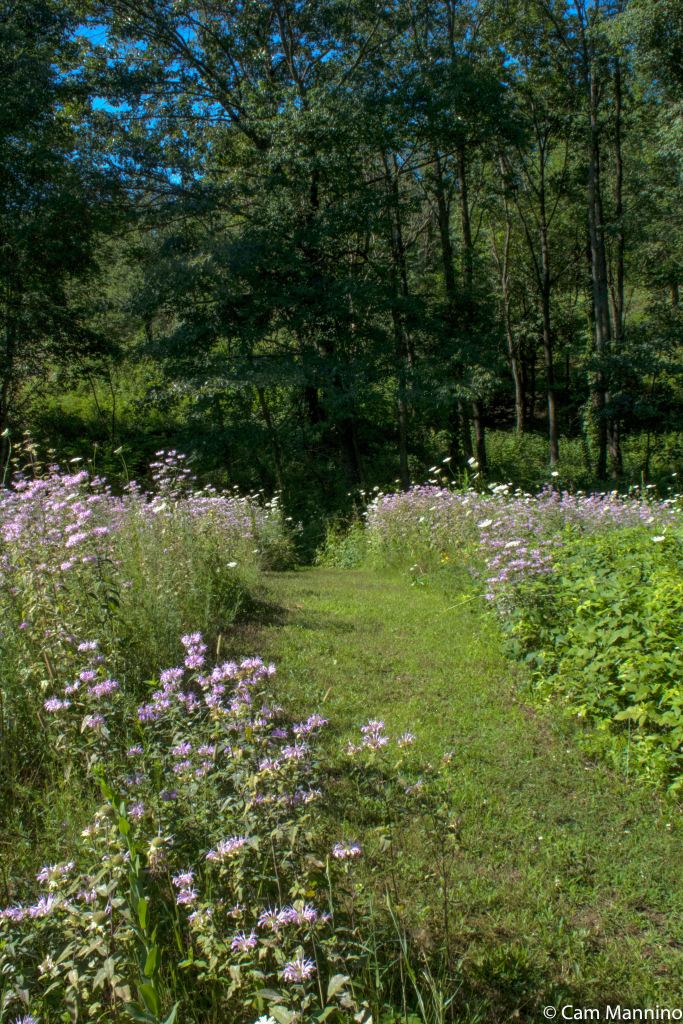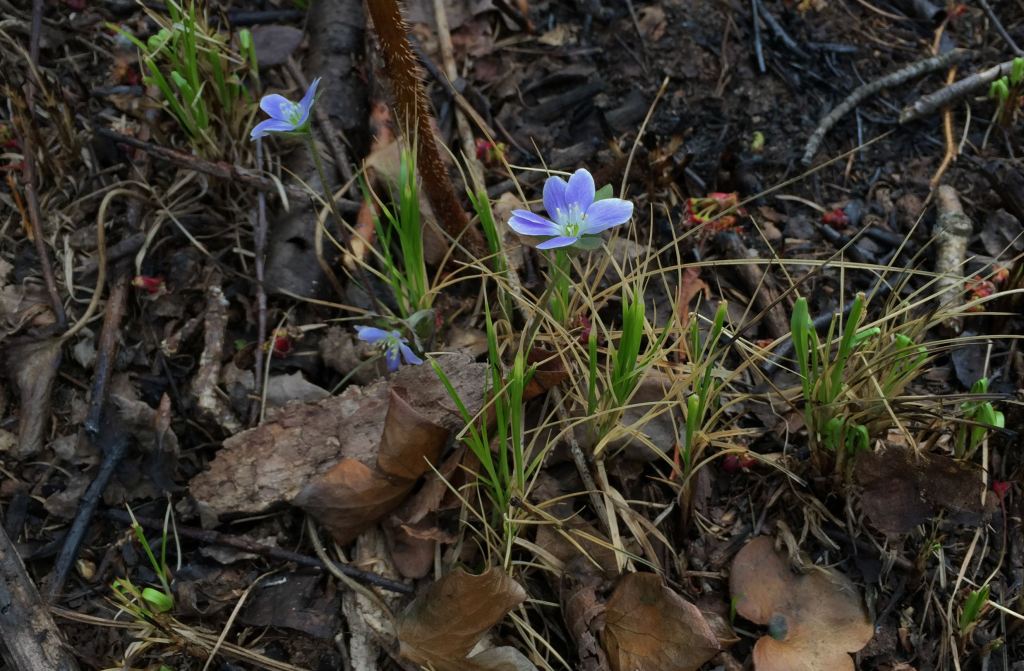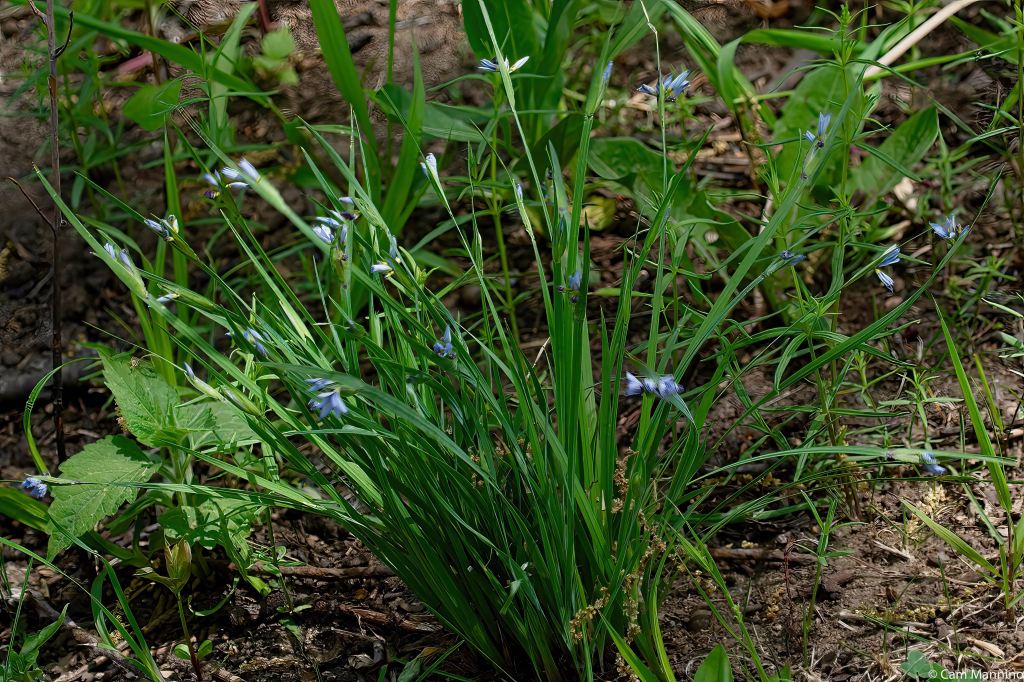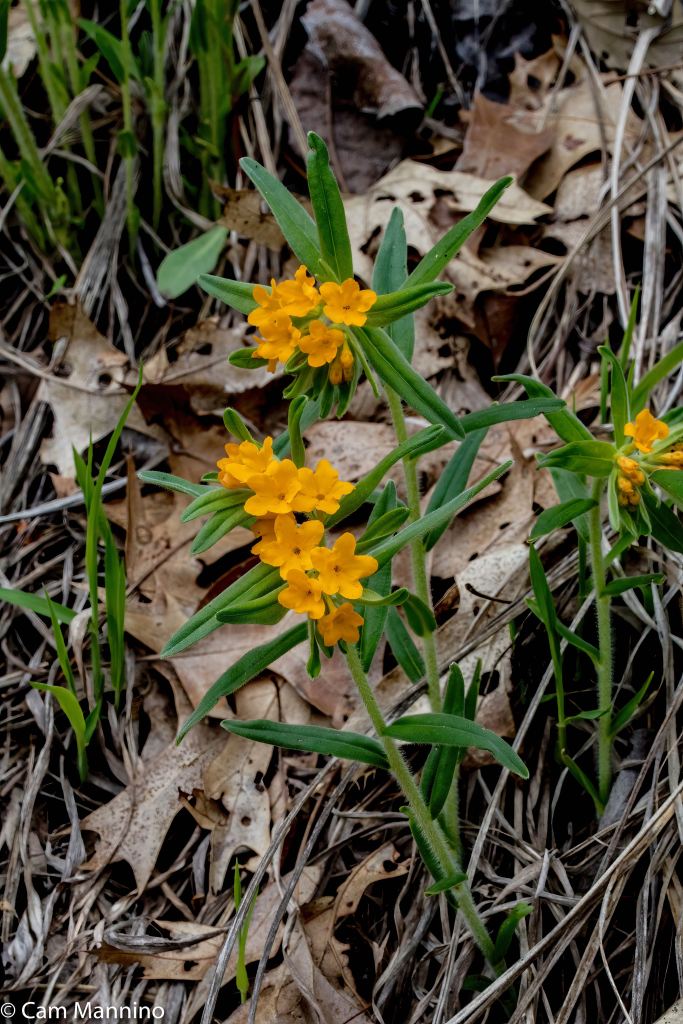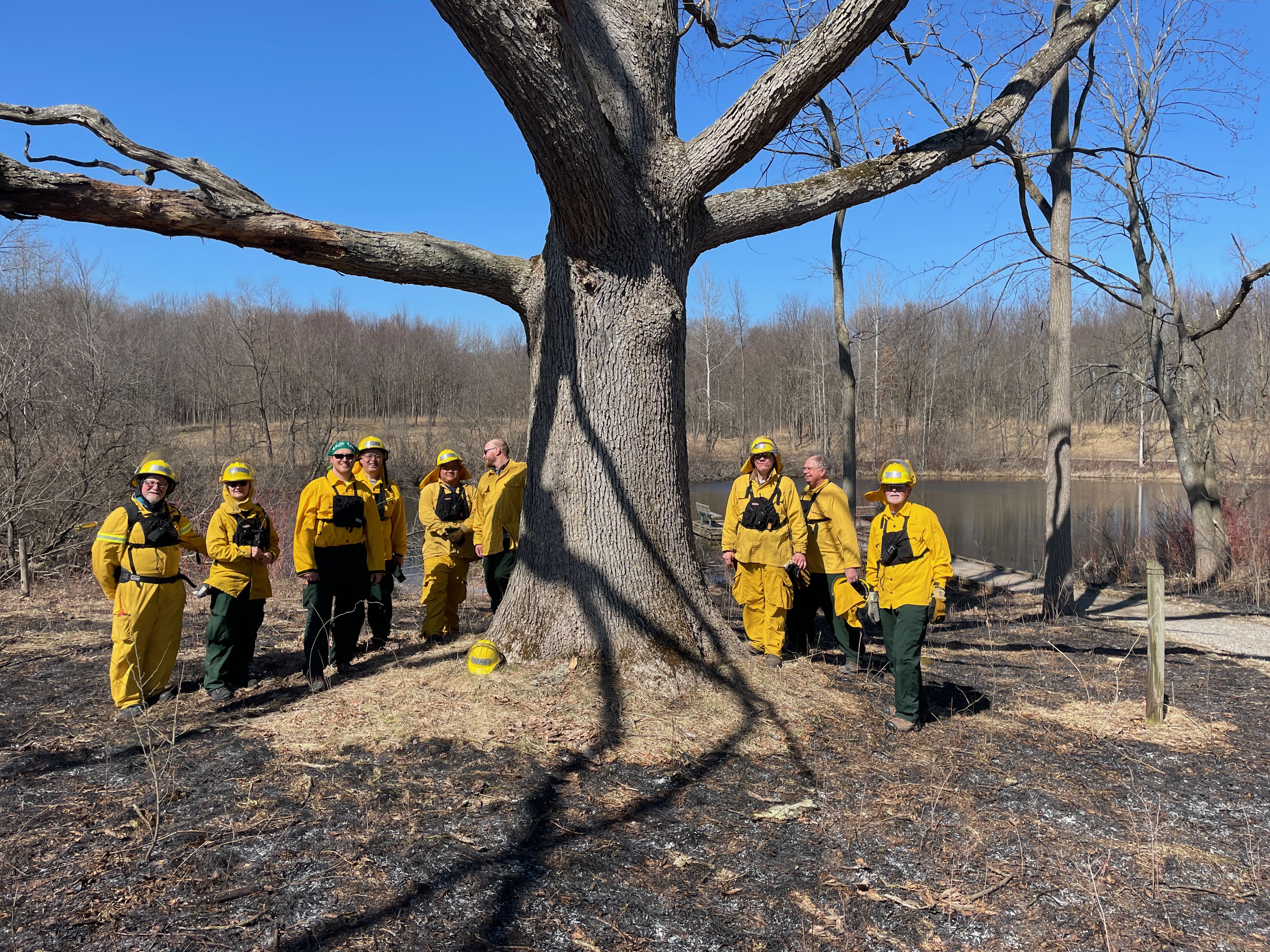
Eight years ago, when I first heard about prescribed burns, I thought “What? That’s pretty counter intuitive. Why would anyone apply fire to help plants?” Luckily, I learned about these restorative burns from Dr. Ben VanderWeide, our township stewardship manager; he had the answers.
After recent highly successful prescribed burns at Bear Creek Nature Park, I thought it might be time to discuss this seemingly strange process once more.
[Please Note: Due to an absurd mistake on my part, nearly all my photos of this spring’s Bear Creek burn were lost. I heartily thank volunteers Bob Schrader and John Reed as well as Grant VanderLaan and Ben for sharing their photos for this blog. My apologies to the fire crew for messing up big time!]
The History of Fire in our Prairies
For thousands of years, rolling prairies and oak savannas, dotted with native wildflowers and widely spaced oaks, carpeted our area of southeast Michigan. Lightning strikes periodically set the trees and fields ablaze, creating large wildfires. The Anishinaabek people that lived here also made regular use of fire, clearing land for crops and attracting game with the tender new plants that rise after a fire.
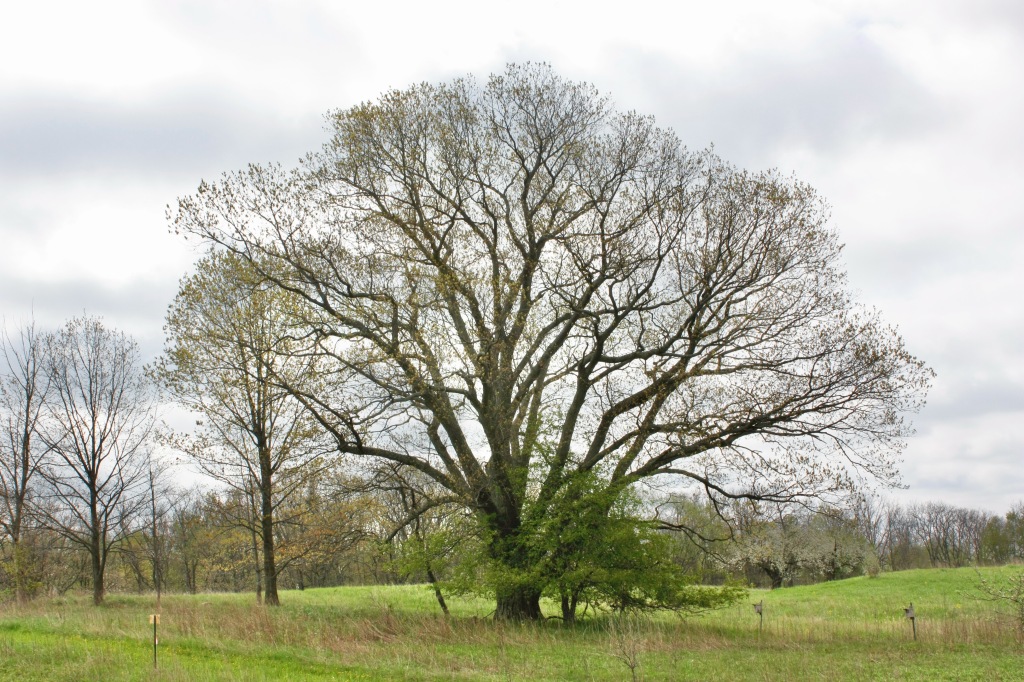
As a result, our native plants became fire-adapted. They “learned to live with” fire and even benefit from it. Trees like the oak in the photo above developed thick bark, especially at the base. Some like jack pines (Pinus banksiana) even require fire to trigger their pine cones to release seeds. For others the chemicals in smoke, the heat of the fire itself, or removing accumulated thatch cues dormant seeds to germinate.
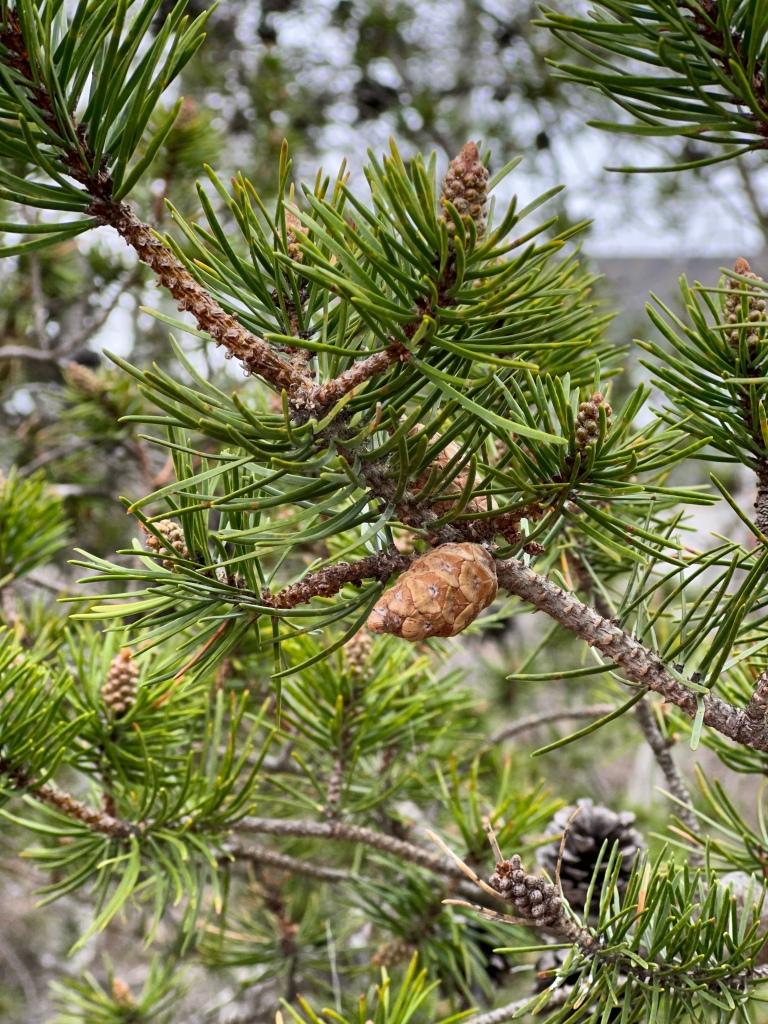

Fire Becomes an Ally in Restoration
Today, while renewing our native plants, fire also discourages or even eliminates many aggressive non-native, non-productive plants that invaded our fields, forests, and remnant prairies after agriculture ended. Their leaves and fruits are either toxic or drastically less nutritious for our native birds, native insects and their caterpillars. Fire acts as an ally in restoration by knocking back these plants that didn’t evolve with fire and therefore never adapted to it. Other invasive plants like crown vetch, Phragmites, invasive bittersweet, and swallow-wort respond positively to fire, so burning is often paired with other management techniques if these plants are found in area to be burned. Our native plants can then provide the nourishing, healthy food on which our wildlife depends.

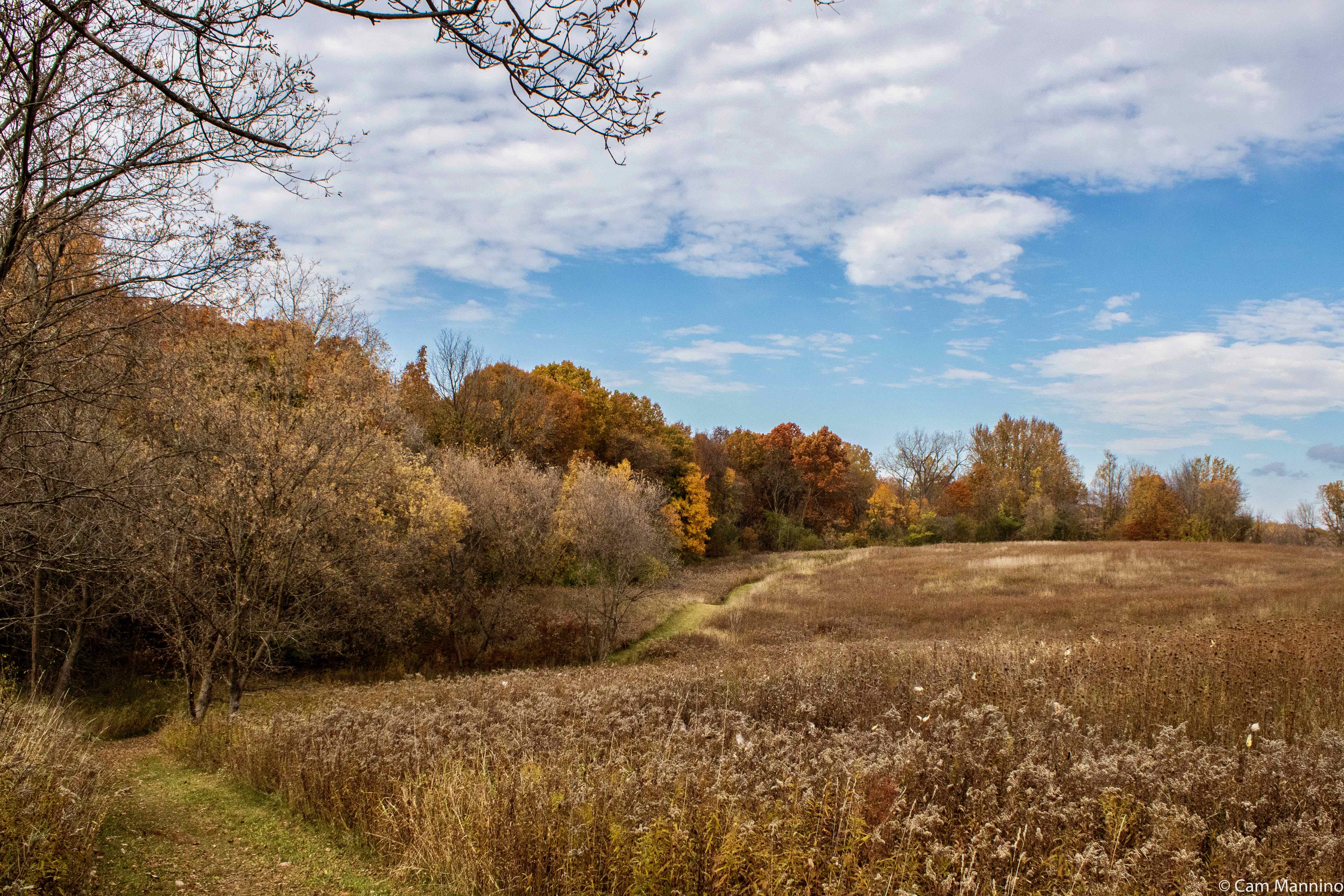
Planning the Prescribed Burn
As Stewardship Manager, Ben plans the burns long ahead of time, choosing areas with good potential for restoration, especially ones with invasive and/or non-native vegetation. If the burn will encompass flat or gently sloped land, Ben often uses his staff plus trained volunteers to set and manage the fire. (Look for our annual training day each February if you’re interested!) He hires licensed contractors to conduct burns that involve large areas, forests with lots of dead wood, or steep hills which present more challenges. [Please note that any prescribed burn should only be done by trained personnel! Detailed knowledge and experience are required for a safe burn.]

Volunteers meet with Ben and the stewardship crew before the fire to review his burn plan in detail. The Parks and Recreation Commission provides our local crew with hard hats, fire-resistant clothing and face shields, as well as walkie-talkies so that crew members can communicate with one another during the burn. All members are trained to acknowledge instructions given to them by the crew leaders and to report any changes in their location or fire behavior during the burn. Once the neighbors have been notified, prescribed fires occur on days with the right wind speed, wind direction, and humidity. A fire weather forecast also gives the crew clues about how well the smoke will rise and disperse. Before the burn begins, the crew removes logs and large fallen branches near the edge of the burn unit and/or douses them with water from backpack canisters that can be refilled from a large tank carried in the crew’s truck .
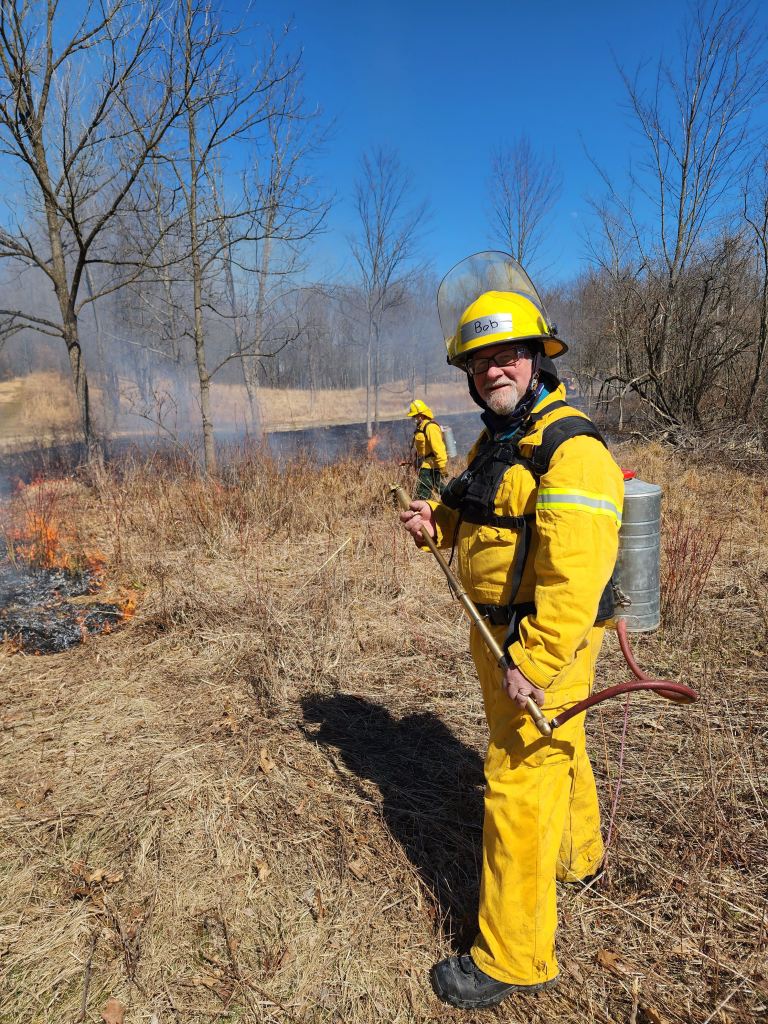
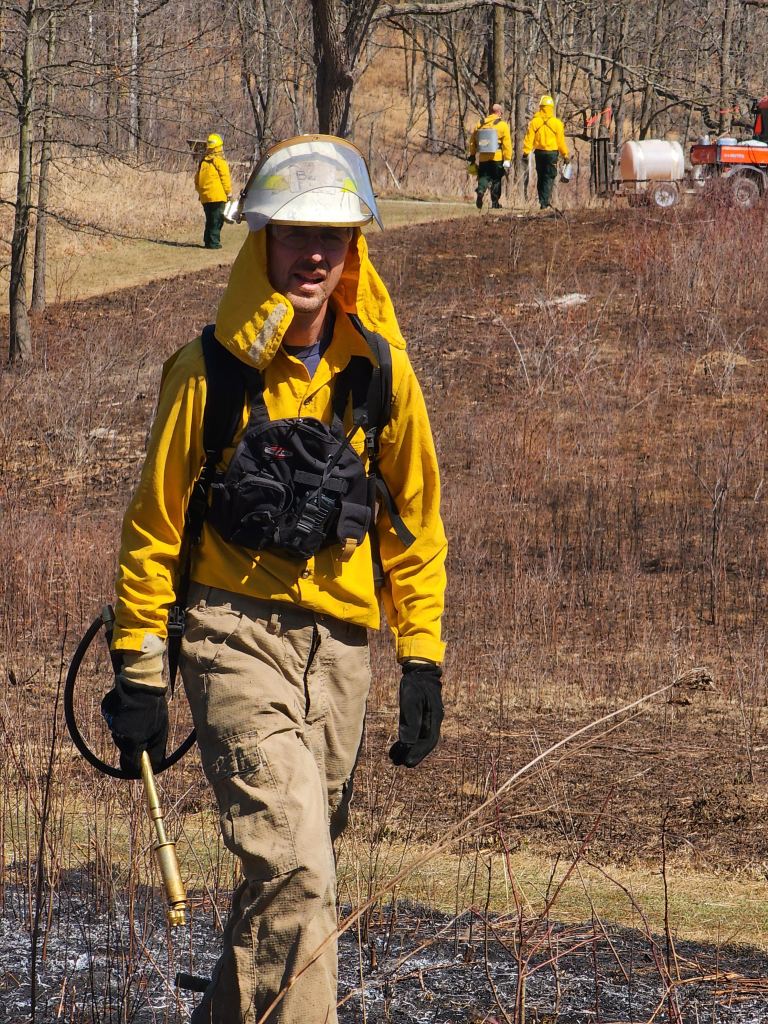
Ben monitors the wind before and during the burn to prevent the smoke as much as possible from carrying into nearby neighborhoods. The natural areas stewardship staff creates or checks “burn breaks” around the perimeter of the “burn unit” days, weeks, or months before the burn day. A burn break can be pond, stream, or other naturally occurring feature, or it might be a trail, road, parking lot or other human-constructed thing that doesn’t have fuel for the fire to burn across. Burn breaks are also created around bird nest boxes, utility poles, or other fire-sensitive objects inside the burn unit.
Igniting and Monitoring the Fire
The crew first ignites the fire on the downwind side of the burn unit, creating a slow “back burn” that creeps against the wind into the burn unit. Fire slips in droplets from the tip of a drip torch as crew members walk slowly around the edges of the unit, carefully starting the fire. The crew allows the fire to create a wide burned area on the downwind side before moving around to the edges, or “flanks.”

As the crew spreads the fire around the flanks, it slowly spreads inward toward the center of the burn unit.

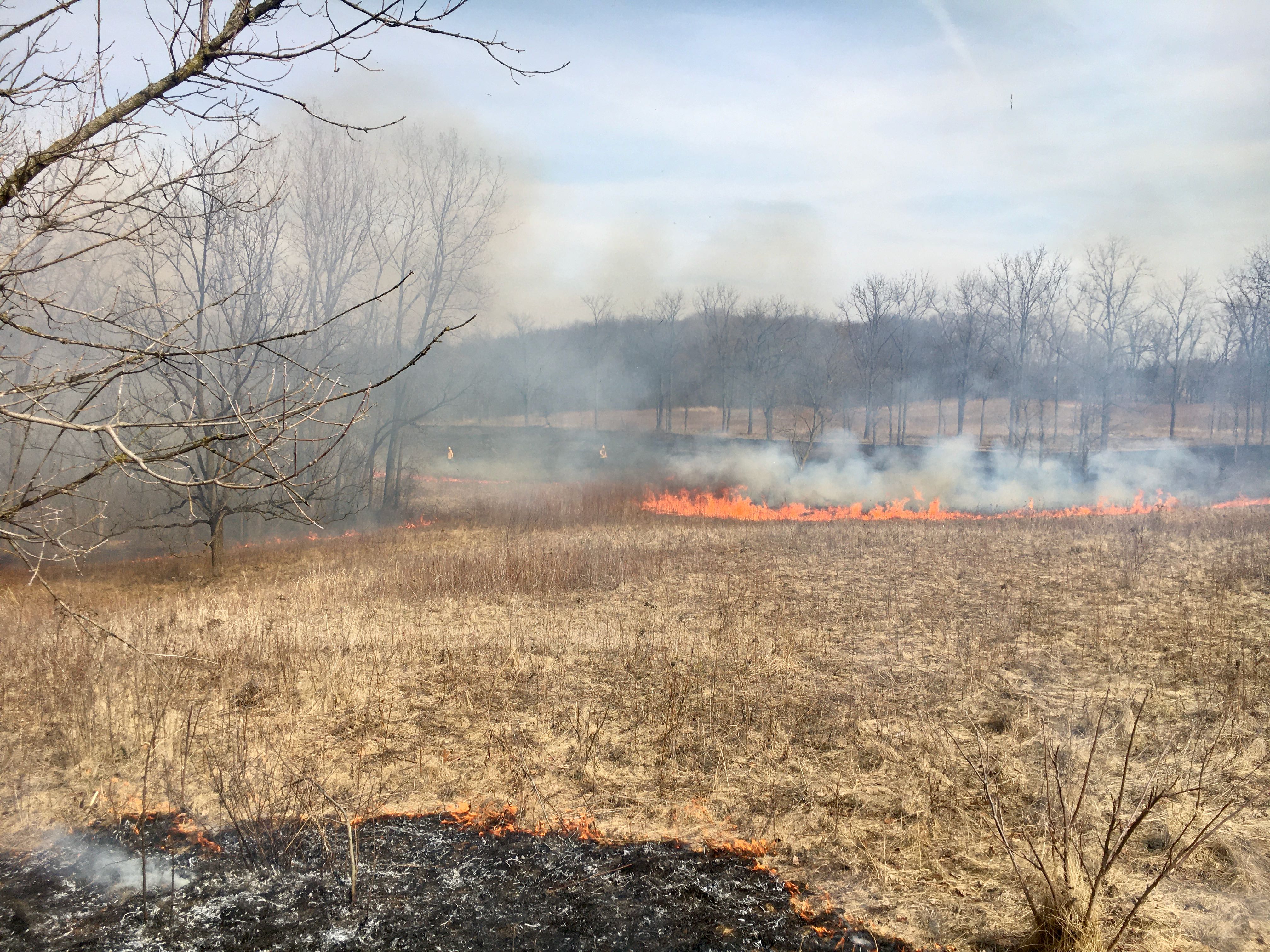
The fire burns around and under trees and shrubs. Most larger trees have thick bark that easily protects them from a quickly passing fire. Many small trees and shrubs are top-killed by fire, but most resprout vigorously afterward. In fact sumacs, willows, and some other native shrubs grow better if they are occasionally pruned back by fire. In my photos below, fire burned right under a fire-adapted small oak during the second burn and when it passed on, the little oak and its spring leaf buds showed no damage. If small oaks are top killed by fire, they resprout vigorously from their huge roots.


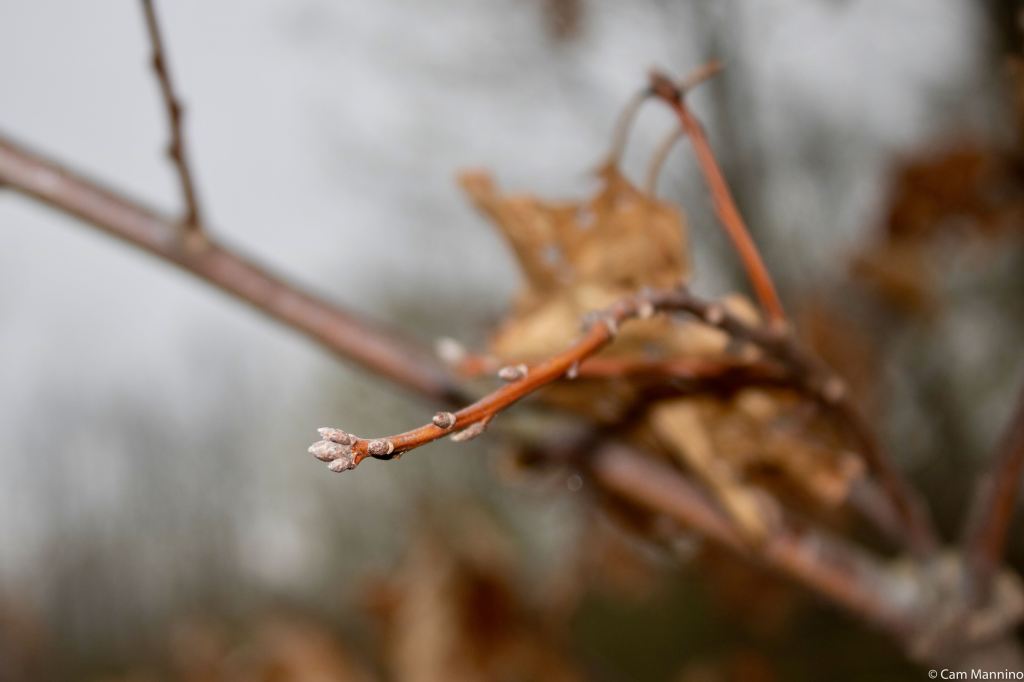
While the basic tools of prescribed burns are water tanks and drip torches, some crew members carry tools like a flat-backed fire rake or a fire flapper to separate burning embers or rub sparks or embers into the ground. Once the fire dies down, these tools and the water tanks are used to put out any smoldering material during “mop up.”

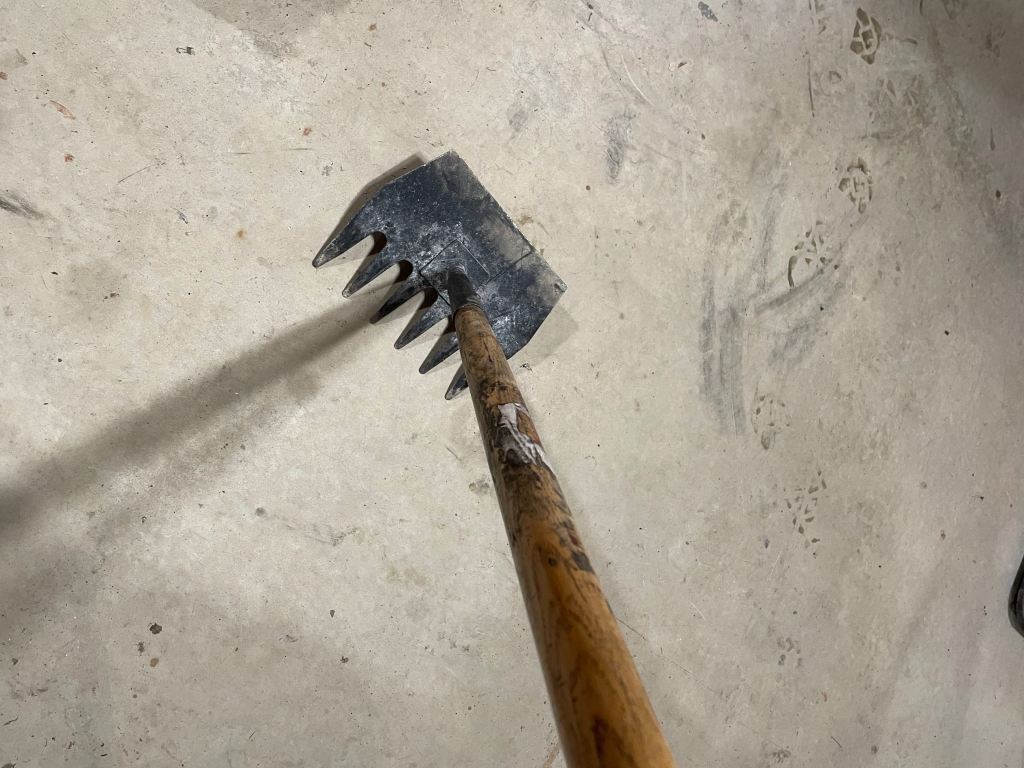
Photo by Grant VanderLaan.
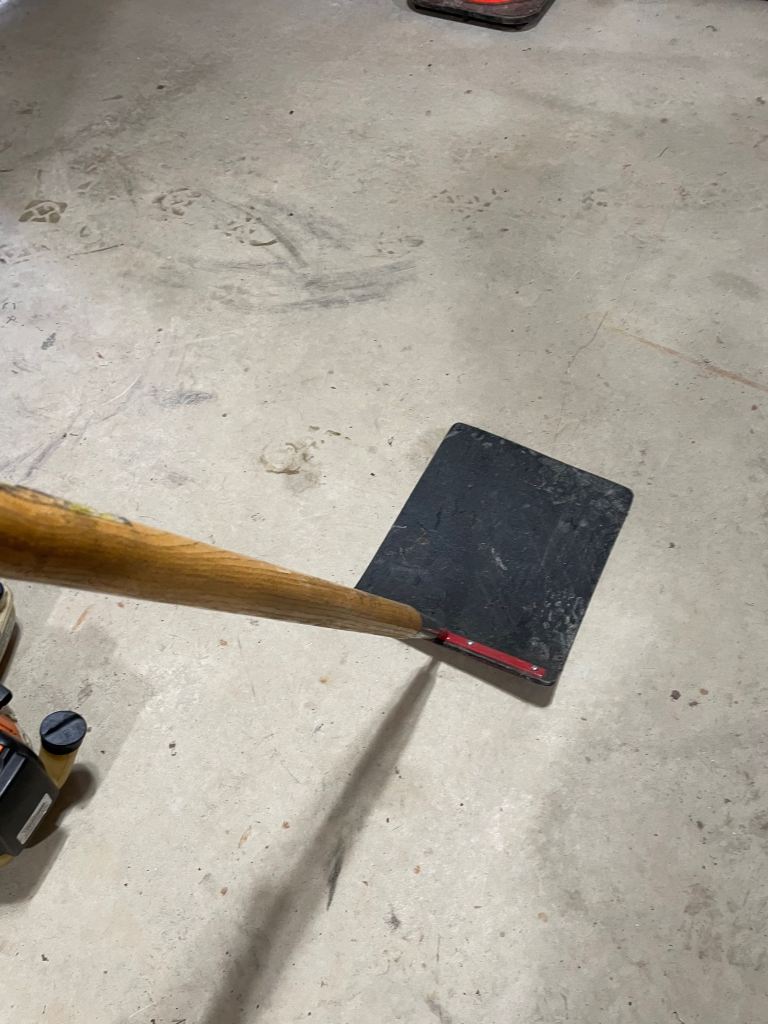
Photo by Grand VanderLaan
Wondering about the Impact on Wildlife?
I worried about this, too! But having witnessed many burns at this point, I’ve learned that once the smoke starts, creatures move quickly out of the burn units. The fire crews never burn a whole park in one day, so there are always unburnt areas in the park where moles, snakes, mice and insects can find refuge quickly. In fact, the crew tries to work the fire upwind so that rabbits, squirrels and other creatures smell the smoke sooner and have time to escape to other areas in the park or beyond.
Some animals and insects retreat to underground nests, like the ants. Remember that our native insects have been dealing with fire for thousands of years and react quickly to smoke. Our pollinators and their caterpillars will benefit greatly in future weeks from the increased population of nutritious native plants created by the longer growing season and the natural fertilizer as the nutrients in the dead plant material are returned to the soil. Many native plants flower more vigorously after a burn, creating a bountiful buffet for our pollinators.
Of course, I’ve also seen a Red-tailed Hawk (Buteo jamaicensis) and an American Kestrel (Falco sparverius) high in the trees calmly ignoring the smoke blowing across their eyes as they watch carefully for possible prey.
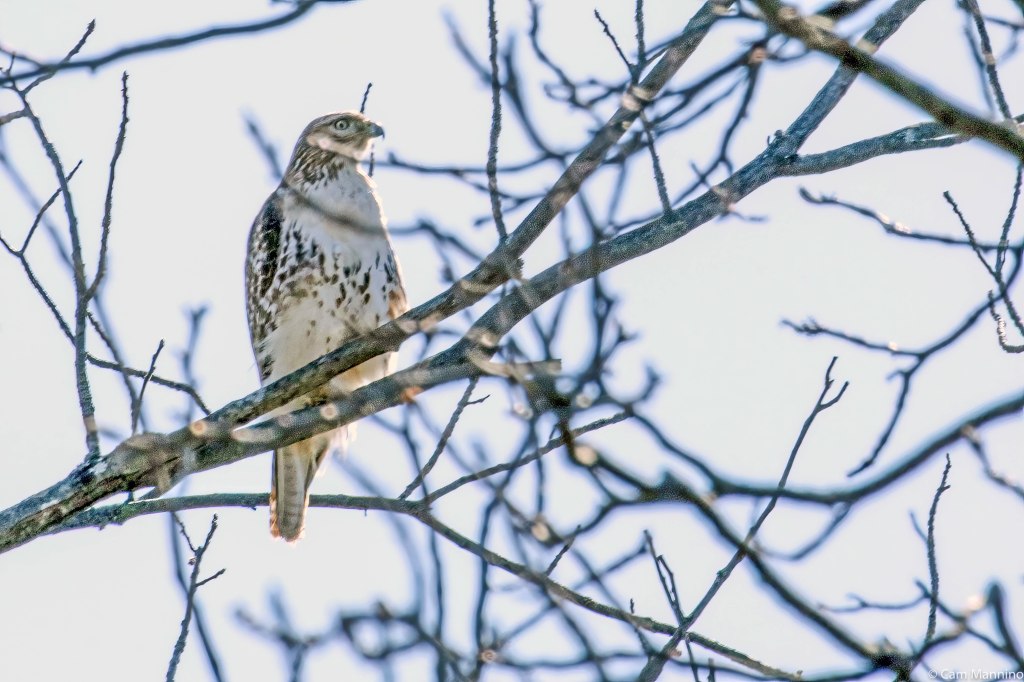
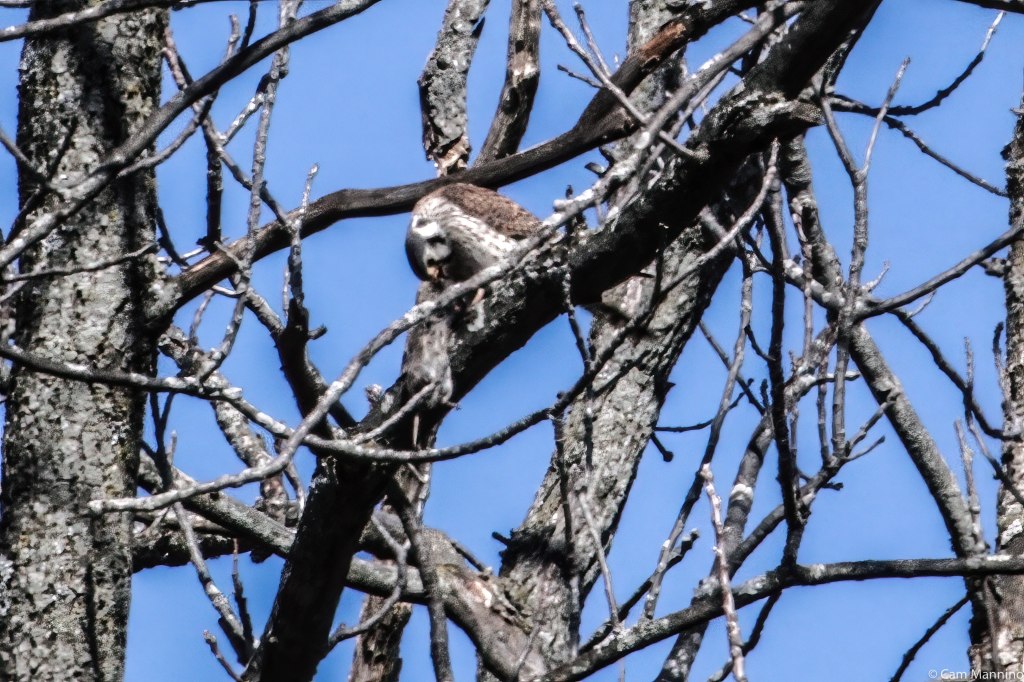
Ben checked one of the burned fields at Bear Creek a few days after the March 21 burn this spring, and found American Robins, Red-winged Blackbirds, and others enjoying the easy food options on the Western Slope. Here’s his video of what he heard as he looked across the blackened field! Quite a chorus! The nearby unburned fields were much quieter.
Smaller birds and other animals benefit by foraging in the burn unit after the fire is out. The morning after the first burn, I came back to find American Robins (Turdis migratorious) all over the fields, snatching up worms or insects and a few Dark-eyed Juncos (Junco hyemalis) busily pecking their way around the blackened areas.
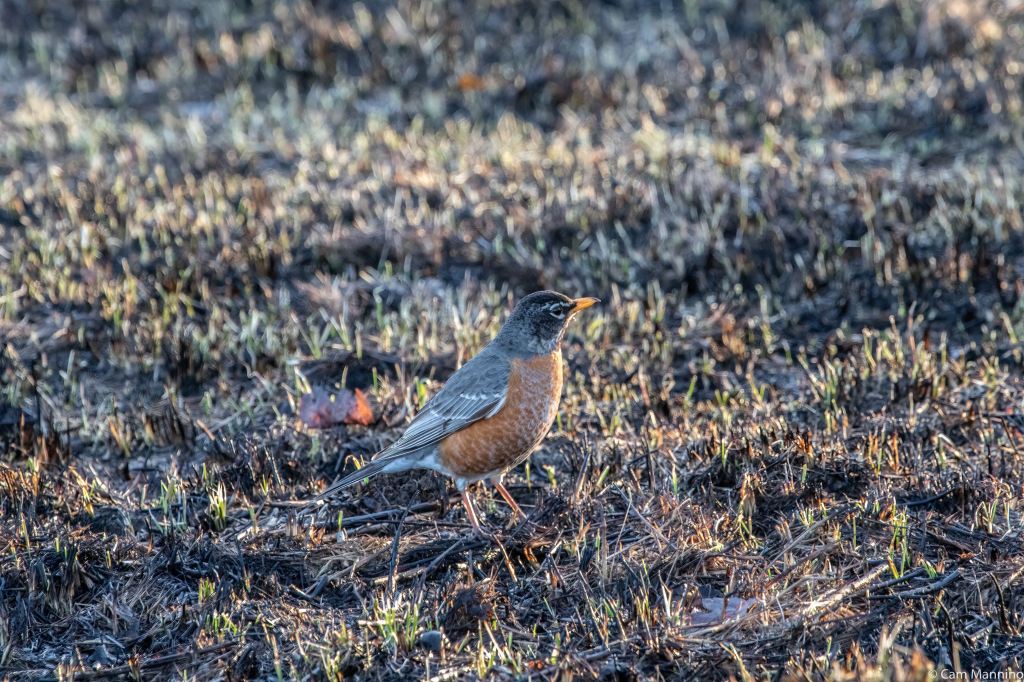

Sowing Native Seed After A Burn
After the second burn at Bear Creek Nature Park this year, Ben sent this assessment to volunteers and staff:
“The burn jump-started the next phase of our restoration work in these burn units! Today [March 31, 2023] between breaks in the rain, we will spread a locally-collected native seed mix on the burned areas to help increase the native plant diversity. It usually takes 3-5 years for plants growing from seed to establish and become noticeable, so you won’t see the results of this seeding for a while. You will see the response from naturally occurring native plants, and from native plant seed that we spread years ago! Look for more growth and flowering from our native wildflowers and prairie grasses this summer!”
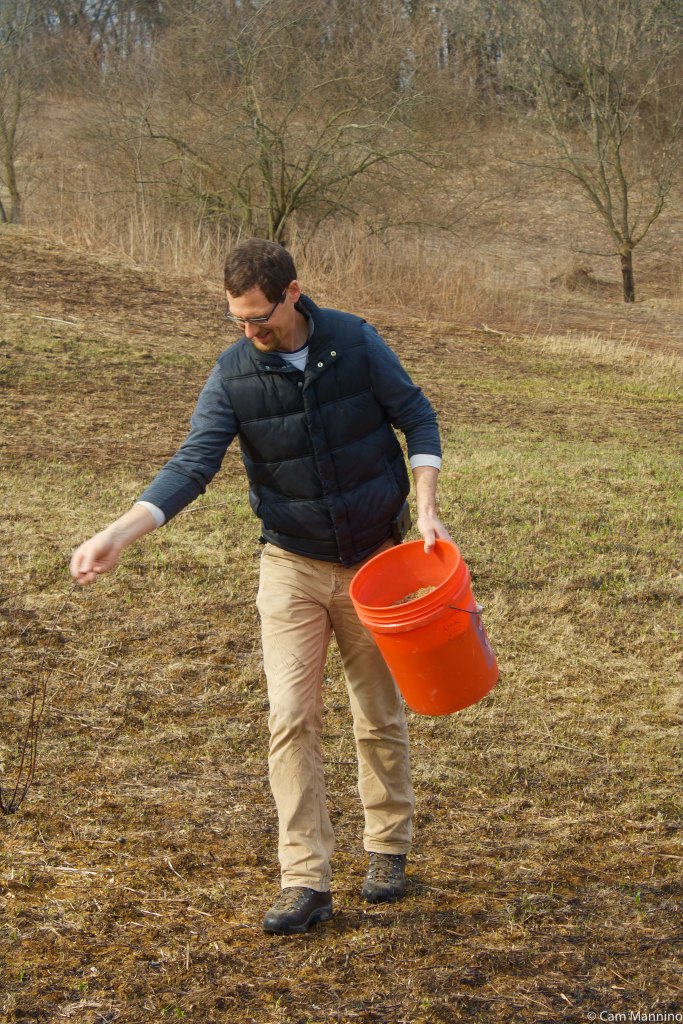
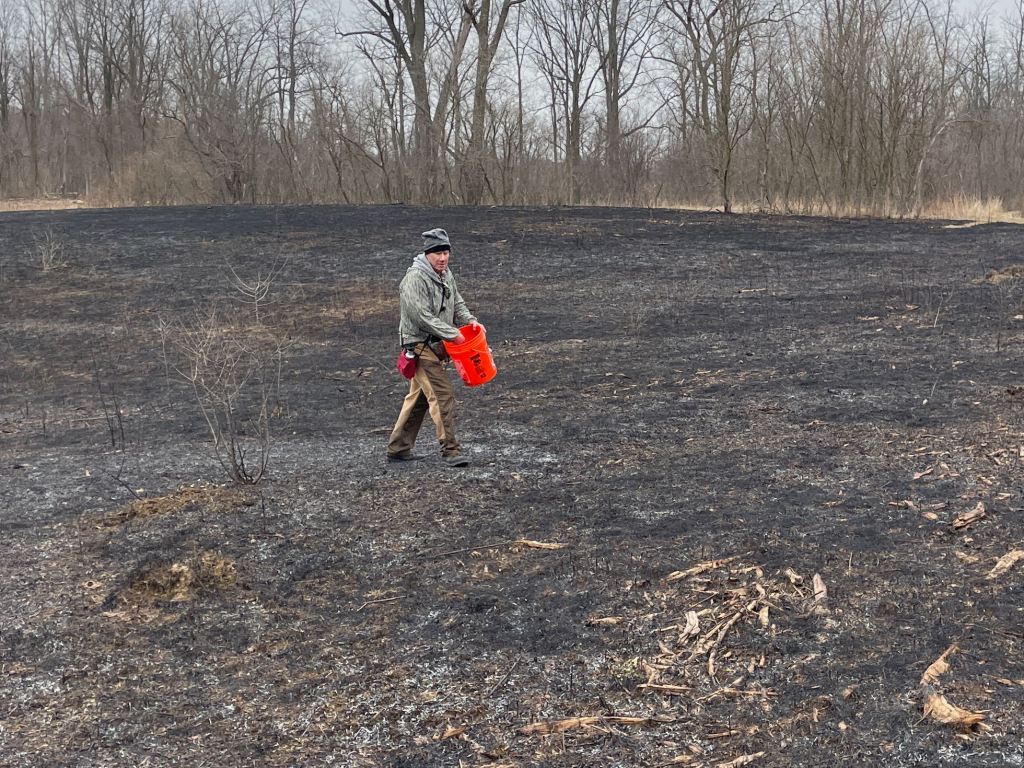
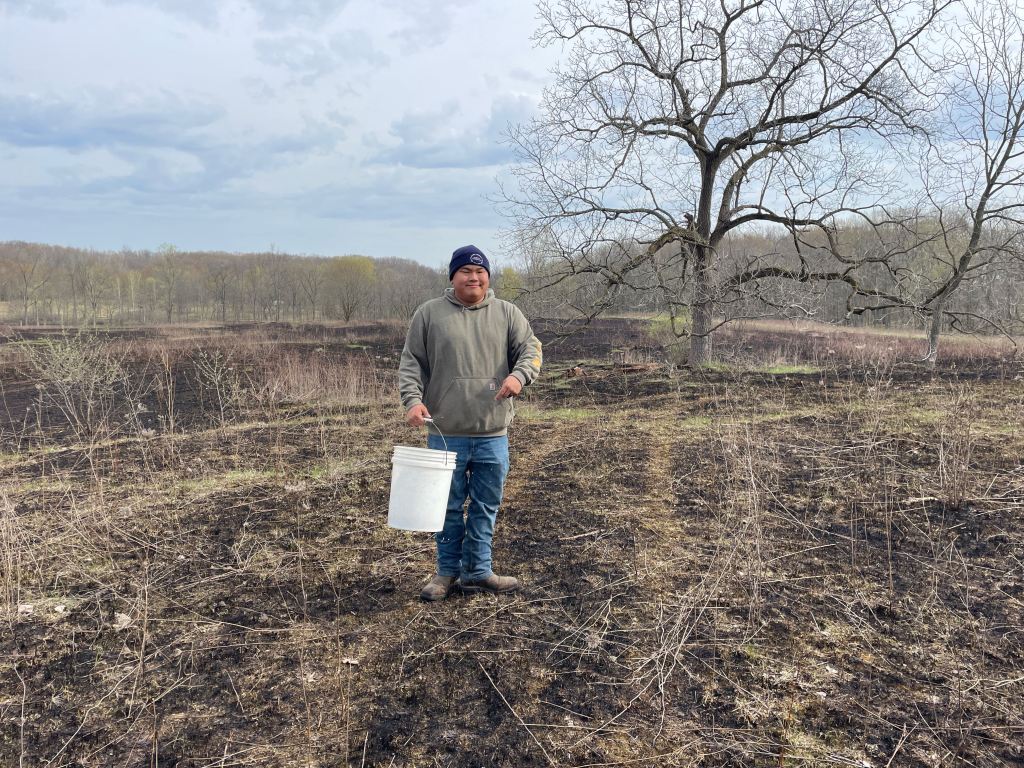
More from Ben: “In a few weeks you’ll start to see green growth emerging in the burn units. Early season burns often take a bit longer to green up compared to areas burned in April or early May. Later this spring and early summer we’ll scan through the burn units to look for invasive plants like crown vetch, teasel, and swallow-wort. Later summer or early fall the stewardship crew plans to scan through the burn units to spot treat invasive shrubs that were top-killed by the fire. Next spring we hope to repeat the burn, seed, and invasives monitoring sequence. This process has produced good results as an alternative prairie restoration technique for old field/pasture in Wisconsin (check out this webinar for more info – https://www.youtube.com/watch?v=hvMy–MMM2c), so we’re trying it in the fields at Bear Creek Nature Park.”
Ben was so right about the greening up process. Here’s the Western Slope after the March 21 burn and what it looked like about a month later on April 22.
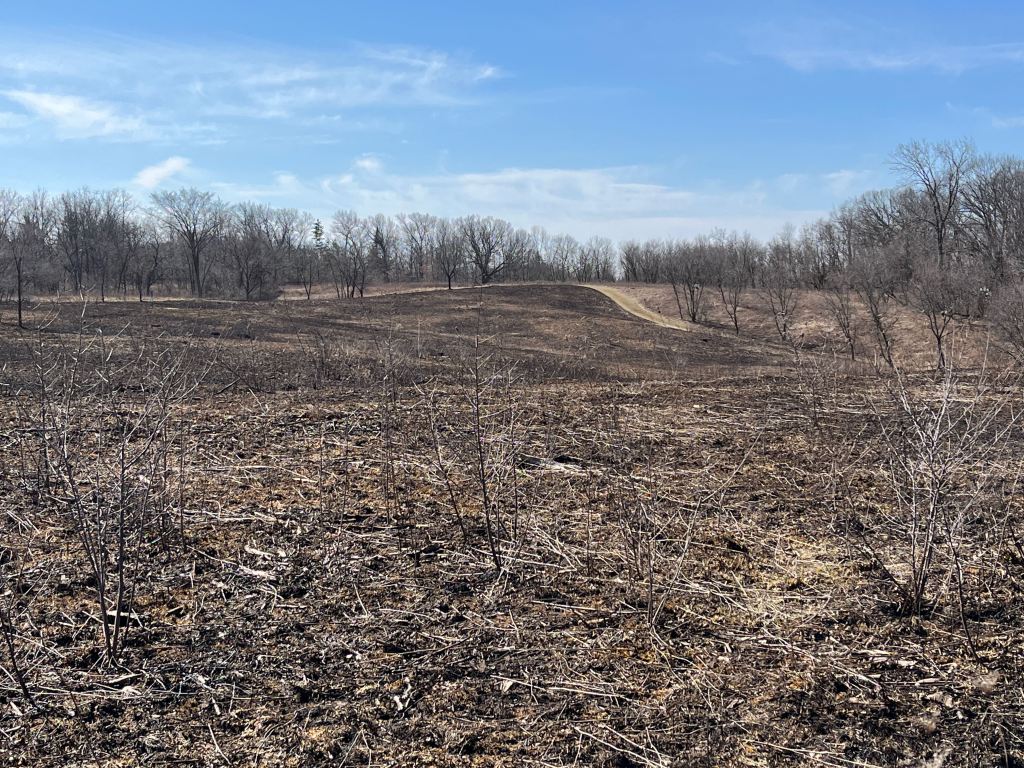
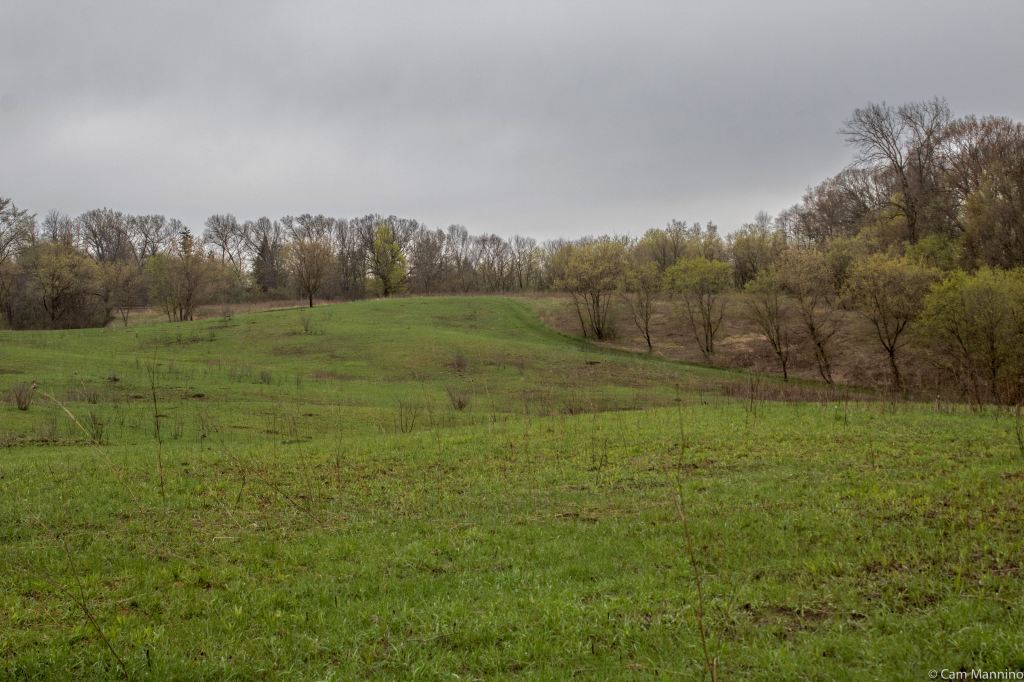
Fire’s Big Payoff
As Ben says above, planting native seeds means a 3-5 year wait for the full bloom to appear while the plants grow deep roots. But if conditions are right, the result can be just amazing and well worth the wait!
Here’s one example that I cherish. In April of 2014, Ben burned the Eastern Prairie at Charles Isley Park. I didn’t get there in time to get a photo that year, but on the left below is a burn photo there from another year. After the 2014 burn and other work to prepare the field, Ben planted native wildflower and grass seed in fall 2015. And look at what a glorious show we had by 2018!
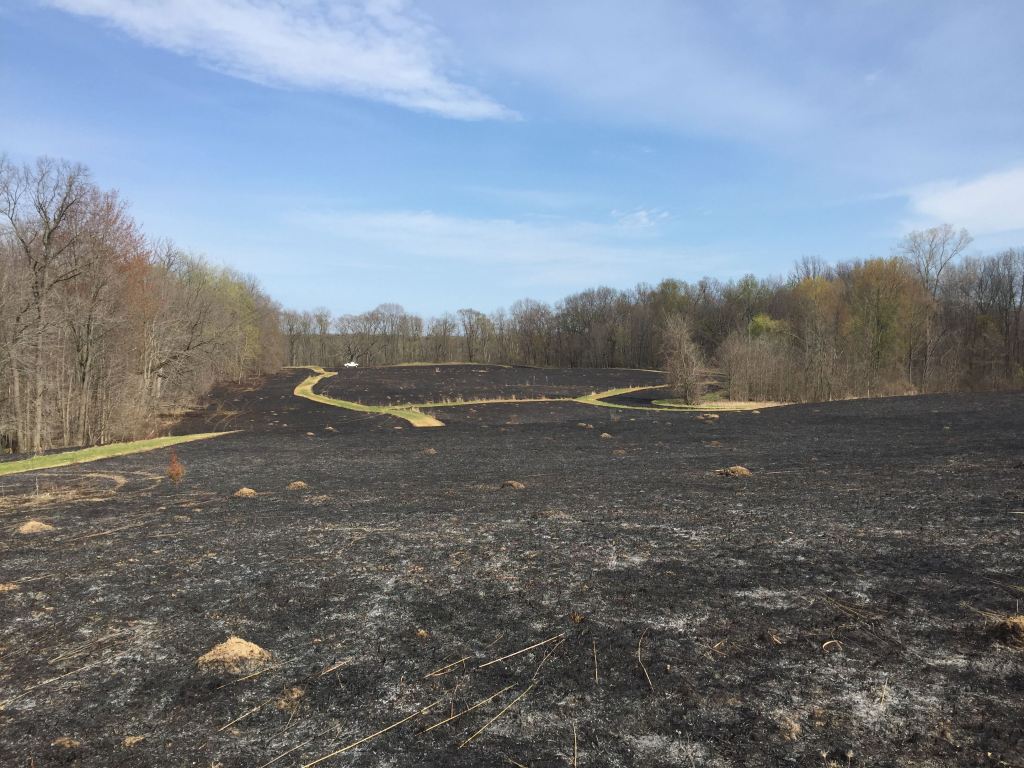
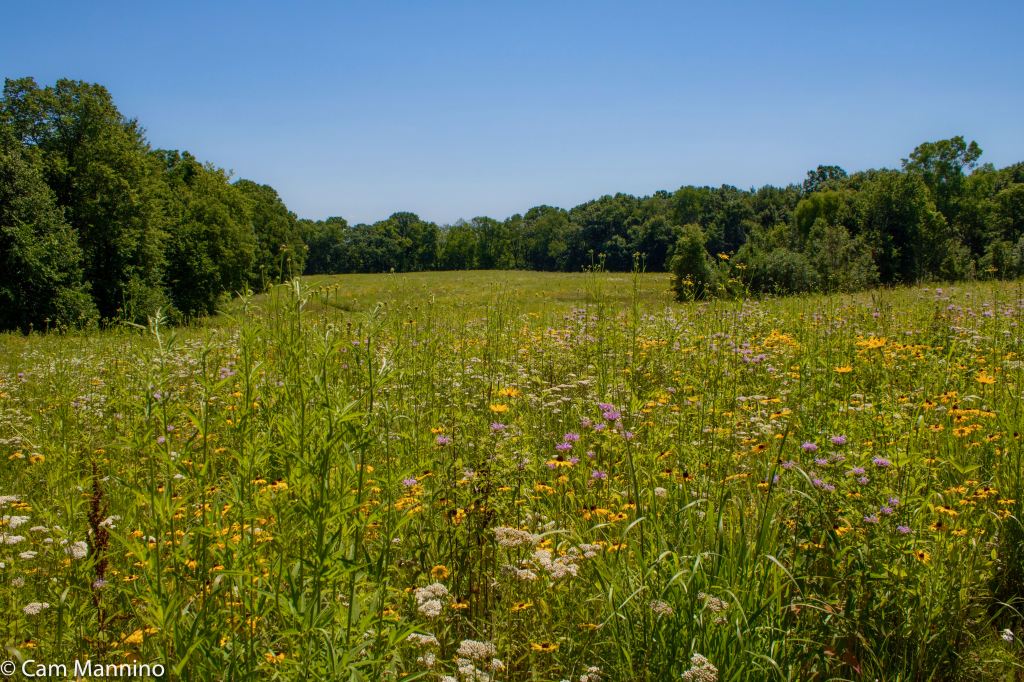
Of course every park, every habitat is different, so we can’t quite expect such a magnificent bloom every time. And the flowers calm down and thin out a bit over time as they sort out their competition and wait for another fire. But I think this 2014 to 2018 transformation is what made me a convert to prescribed fire.
Sometimes I find an even bigger thrill simply seeing a native plant emerge whose seeds were waiting in the soil for years, or small, stunted plants that persisted for years under invasive shrubs. Freed of thatch and invasive shrubs, warmed, fertilized, showered with rain, they finally emerge again into the sunlight. And I love that renewal. Here are just a few wildflowers from different parks that have staged a comeback after prescribed burn and other restoration efforts over recent years.
The Inspiring Persistence of Nature
Native trees, shrubs and wildflowers are an inspiration for me. They’re tough, seasoned survivors, having lived here for thousands of years while coping with Michigan’s changeable weather and rocky, glacier-scraped soil. Native Wood Poppies (Stylophorum diphyllum) in our backdoor garden, some buried unceremoniously under huge piles of dirt by utility workers shortly after planting, just came back and kept on blooming. When our native Clematis (Clematis occidentalis) arrived from the grower looking like a bent, possibly dead stick, I planted it anyway. It bloomed with lavender blossoms during June last year. Insects skeletonized the leaves of our Zigzag Goldenrods(Solidago flexicaulis) its first year, but they leafed out and bloomed a year later.
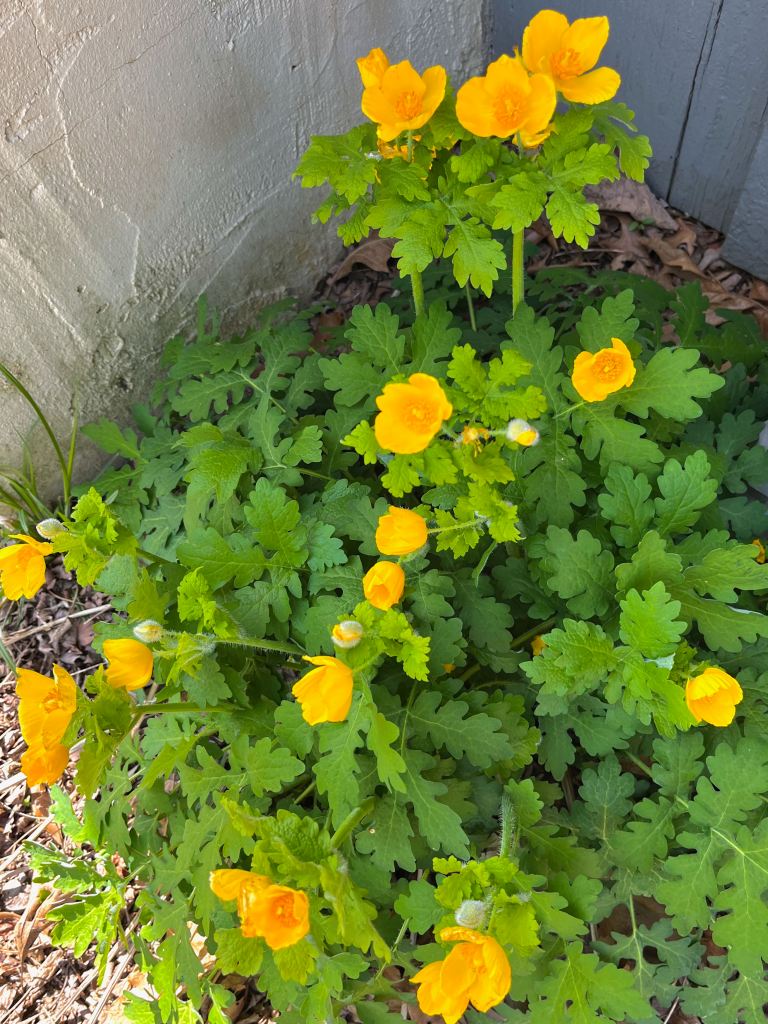
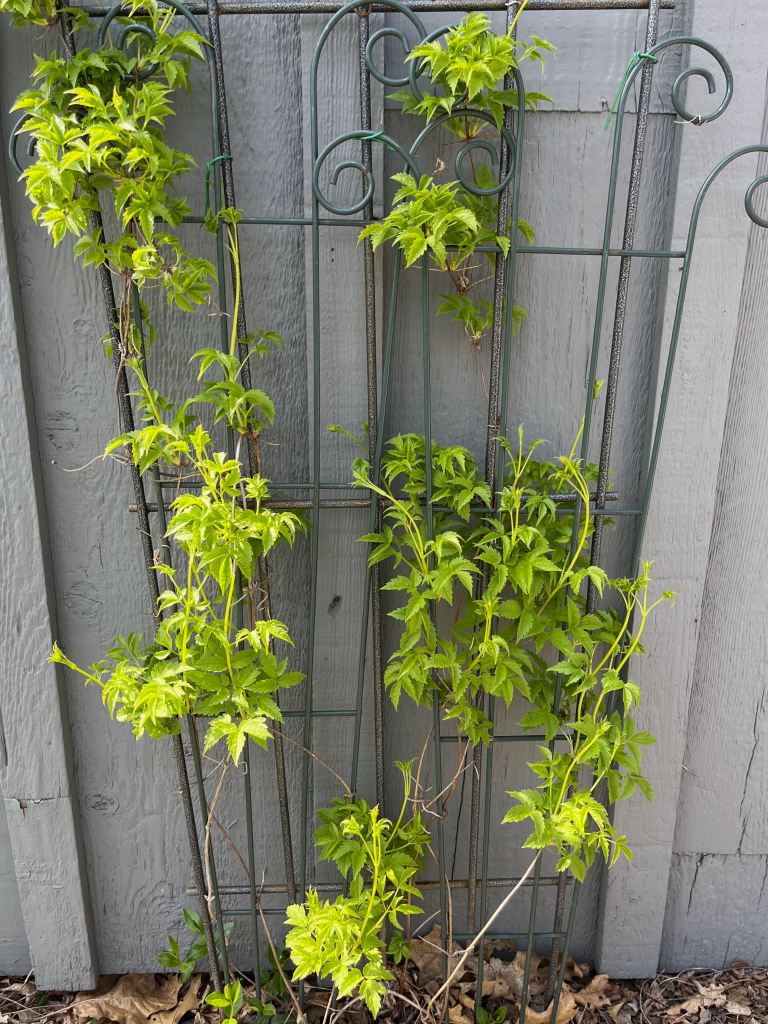
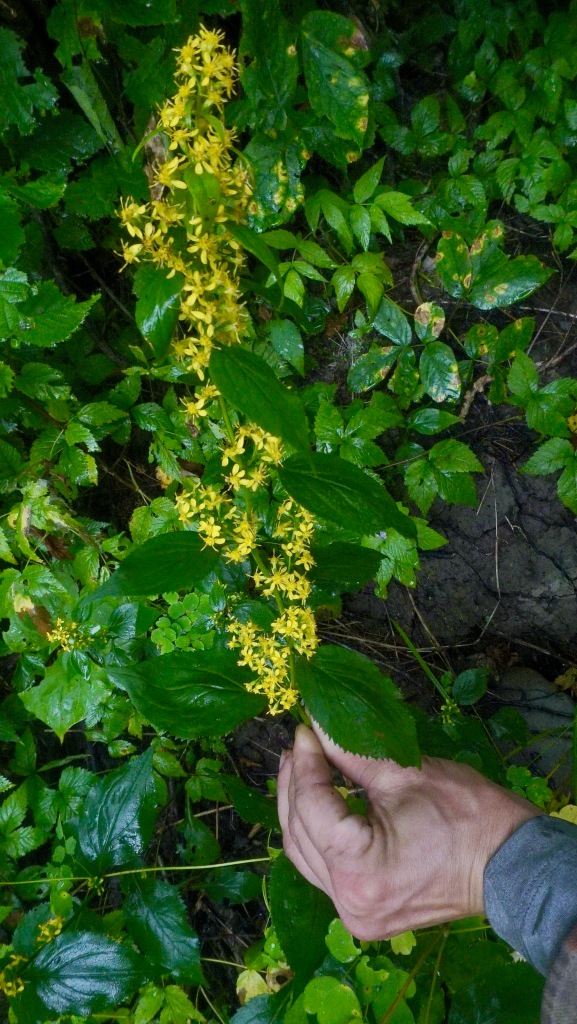
Once native plants establish their deep roots, they take care of themselves and their needs are few. They can thrive in poor soil, tolerate drought, fight off predatory insects with their own chemicals and insist on survival without frequent watering or fertilizer. And as you can see in our parks, they can even thrive after fire, for heaven’s sake!
It’s a sad fact that native plants face a host of challenges caused by us, the brilliant but heedless species, Homo sapiens. Invasive trees, shrubs, grasses and flowers from afar were transported or purchased here by you, I and our forebears. When they escape from our yards into natural areas, they transform our fields and woodlands into dense thickets of a few non-native species. Our native habitat relies on pollinators for survival, but their numbers continue to plummet because we unwittingly chose, and in most cases continue to choose, pretty non-native plants whose leaves malnourish or kill caterpillars, the next generation of insects. And of course few of us have seriously reduced our reliance on fossil fuels which create the newly extreme and erratic climate that wreaks havoc on the complex relationships that sustained nature in a healthy, finely tuned ecosystem for millennia.
But now we know, right? And here in Oakland Township, we’re doing our best to provide native plants with a new lease on life. First, we preserve open areas and then we work to restore them to health. So when Ben and the stewardship crew ignite their drip torches, I’m delighted. We’re taking nature’s side, trying to restore native habitats in our parks and for many of us, in our yards and gardens. That’s the side I want to be on – and I’m betting you do, too. I mean, it makes so much sense! After all, nature can survive without us, but we definitely cannot survive without nature! So let’s just do what we can with what we know now. Let’s see how much progress we can make in our little green corner of the world before we leave it to the next generation.
